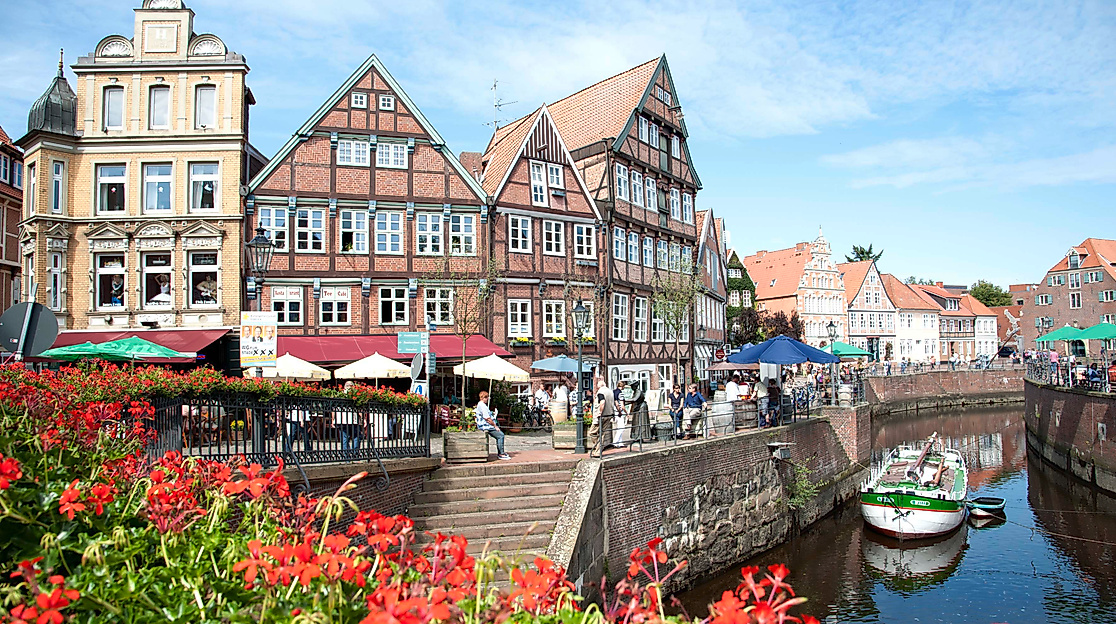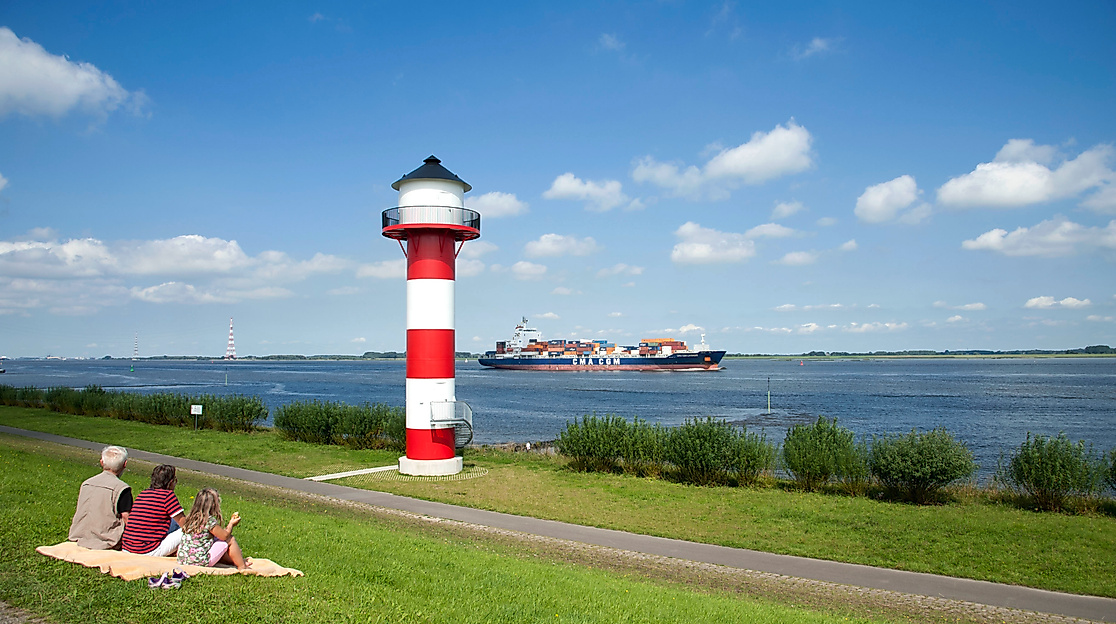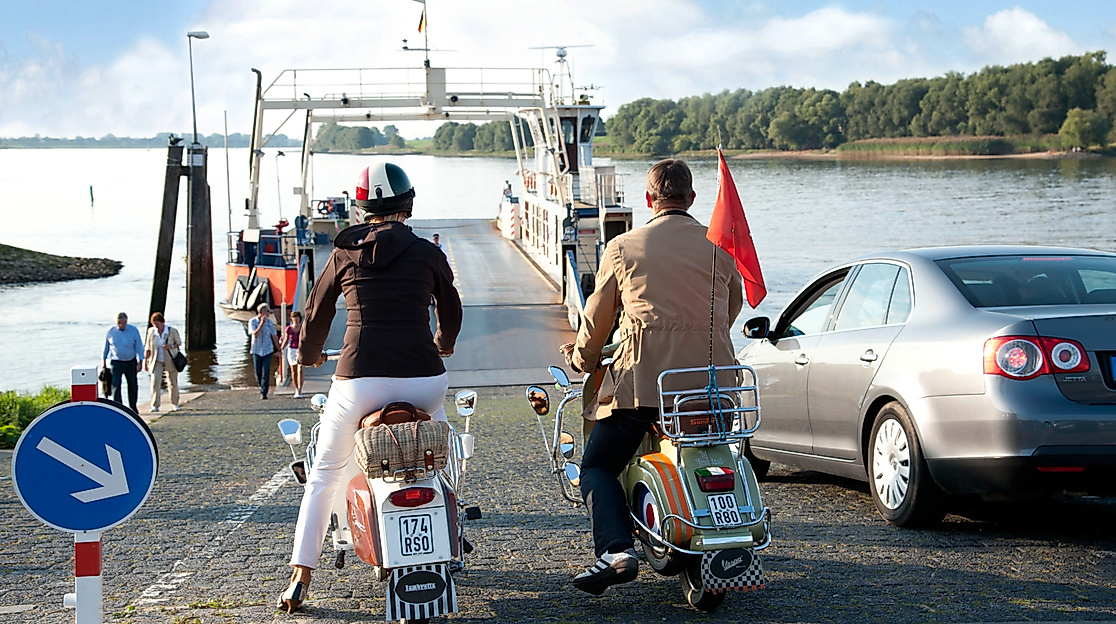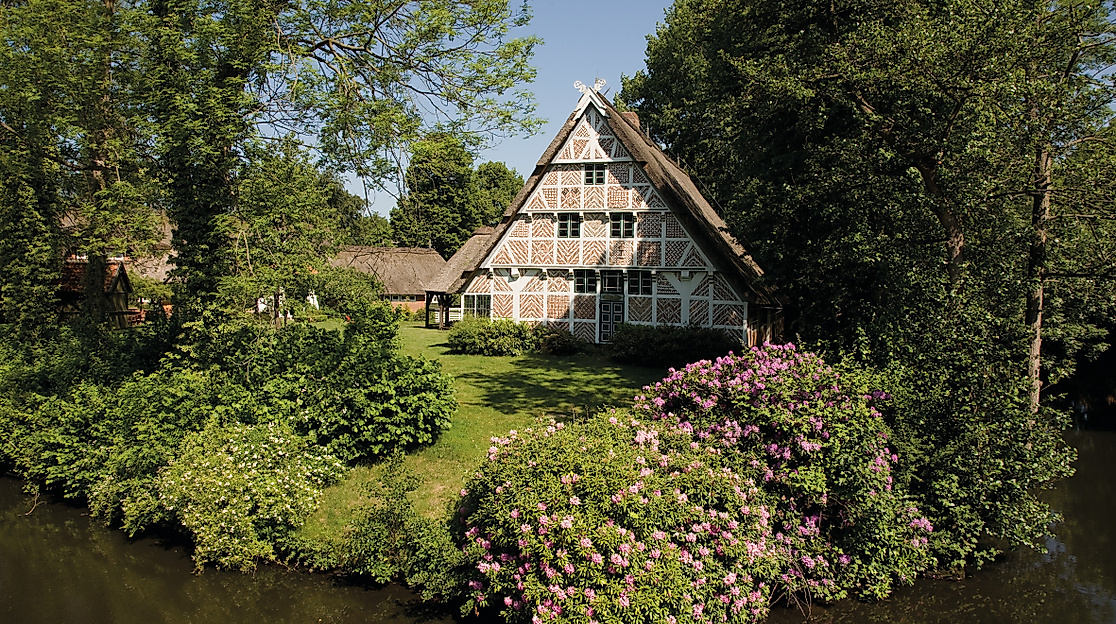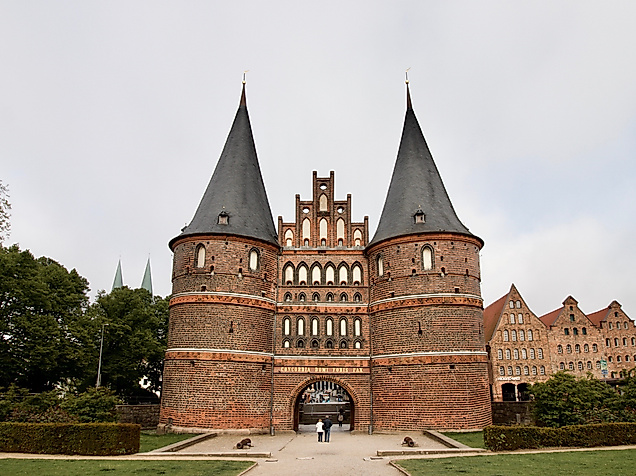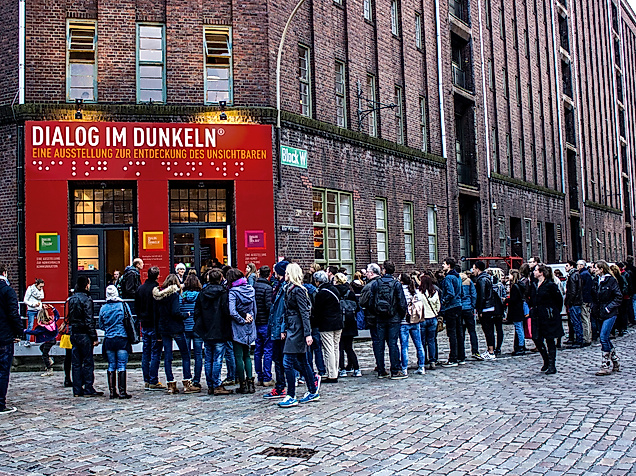Old half-timbered houses, cobblestones, the old Hanseatic harbour, the proximity to the water - attributes which are associated with a Hanseatic town and are found in Stade in exactly the same way. Over ten million fruit trees bloom every spring at the gates of the Hanseatic city of Stade. A day trip to the Lower Saxon town on the Lower Elbe is worthwhile.
Around 45 kilometres west of Hamburg and 60 kilometres east of Cuxhafen lies the Hanseatic city of Stade. The historic city can be reached from Hamburg by S-Bahn in just one hour.
The Stade landing strip
Stade was built at the end of the 8th century on a small landing pad on the banks of the Elbe River. The town owes its name to this history. The term Stade comes from the Middle High German and is characteristic for a naturally developed landing place for small ships.
In the 13th century numerous merchants settled in the Hanseatic city. The successful commercial transactions strengthened the economic power of the region. For a long time, the port of Stad was more important for international trade than the port of Hamburg. Under Swedish rule from 1645 to 1712, Stade lost its reputation and wealth. The Swedish wars exhausted the powers of the Hanseatic city.
Historic town
An ideal starting point for the visit of the historical city at the Elbe is the fish market at the old port. From there you can visit the impressive churches of St. Wilhadi and St. Cosmae, the town hall and the Swedish Warehouse.
Fortress or open-air museum?
The oldest open-air museum in Germany can be visited on a small island in the middle of the city. The area, surrounded by a moat, was once built by the Swedes as a fortress. Today, visitors can visit an Altländer farmhouse dating from 1733.
Off to the Altes Land
The Alte Land is a real magnet for visitors, especially in spring and autumn. Around ten million fruit trees transform the Alte Land into a colourful sea of flowers in spring. Cherry, plum and apple trees stand on about 170 square kilometres. The thatched half-timbered houses round off the idyll.
